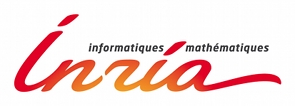
 |
 |
 |
 |
 |
 |
 |
 |
 |
|
L. Rozé and M.-O. Cordier Diagnosing discrete-event systems : extending the ``diagnoser approach'' to deal with telecommunication networks , Journal on Discrete-Event Dynamic Systems : Theory and Applications (JDEDS) , Kluwer Academic Publishers , Vol. 12 , No. 1 , 43-81 , January , 2002 , Document |
| Abstract Detection and isolation of failures in large and complex systems such as telecommunication networks are crucial and challenging tasks. The problem considered here is that of diagnosing the largest French packet switching network. The challenge is to be as efficient as the existing expert system while providing greater generality and flexibility with respect to technological and reconfiguration changes in the network. The network is made up of interconnected components each of which can send, receive and transmit messages via its ports. The problem we are faced with is to follow the evolution of the network on the basis of the stream of time-stamped alarms which arrive at the supervision center. We have decided to use model-based techniques which are recognized to be more adapted to evolutive systems than expertise-based approaches are. This paper starts with a description of how we model the global behavior of this discrete-event system by using communicating finite state machines. It goes on to explain how this model is used for analyzing the stream of alarms and diagnosing the network. Our work is based on the diagnoser approach proposed by Sampath et al. Starting from a model of the network adapted to simulate faults, this approach transforms it into a finite state automaton, called a diagnoser, in order to analyze the stream of alarms. The approach described by Sampath et al proved to be grounded on certain basic hypotheses which were too restrictive for our application. This paper extends Sampath et al's proposal to communicating finite state machines. The difficulties we had to cope with are outlined and the way we overcome them is presented. A major difficulty is the huge size of the global model of the system. To solve this problem we take advantage of the hierarchical structure of the network and rely on a generic model of the system for building a generic diagnoser. |
|
This web site is maintained by René Quiniou using the Weave system from the Caravel project: http://www-caravel.inria.fr. Last modification: 10-07-2011 09:54:25 |